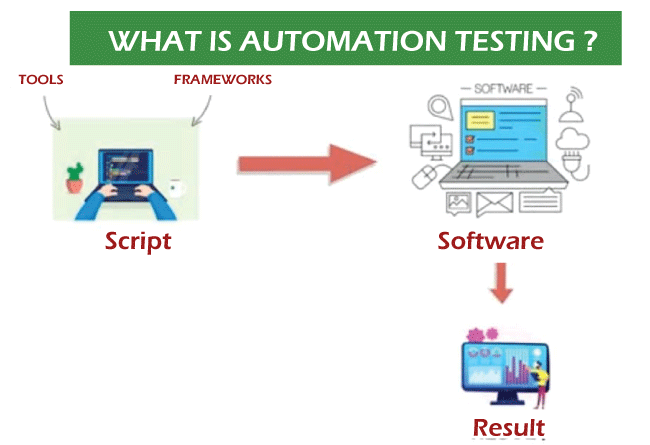The Ultimate Overview to Implementing Automation Testing Efficiently
The Ultimate Overview to Implementing Automation Testing Efficiently
Blog Article
Ensuring Success in Automation Testing: Trick Metrics, Difficulties, and Solutions Every QA Team Must Know
In the world of software quality assurance, the landscape of automation screening is ever-evolving, requiring a meticulous method to make certain seamless procedures. Key metrics function as the compass assisting QA teams via the substantial terrain of test automation, losing light on development and locations for improvement. Challenges loom big, often casting shadows on the course to success. By recognizing these difficulties and executing effective solutions, QA teams can browse with intricacies with skill. The trip to grasping automation testing is paved with nuances that need a keen eye for surveillance, evaluation, and continual improvement. automation testing. As the industry propels ahead, the mission for ideal performance in automation testing remains a constant quest, urging QA teams to furnish themselves with the understanding and techniques vital for accomplishment.
Importance of Key Metrics
Understanding the relevance of key metrics is necessary for reviewing the performance and efficiency of automation screening procedures. Trick metrics act as quantifiable steps that offer beneficial understandings into various aspects of the screening process, such as test coverage, test execution time, issue thickness, and examination instance performance. By analyzing these metrics, QA teams can identify traffic jams, inadequacies, and locations for enhancement within their automation testing structure.
One vital element of essential metrics is their capacity to track progression and keep track of the general health of the screening procedure (automation testing). They enable stakeholders to make enlightened decisions based on data-driven understandings, which can cause extra effective testing methods and far better source allowance. In addition, crucial metrics can help teams set reasonable objectives, measure the success of automation initiatives, and demonstrate the ROI of automation testing efforts

Typical Obstacles Faced
Obstacles commonly run into in automation testing processes can dramatically affect the total performance and effectiveness of QA teams. Automation testing might not cover all elements of screening, such as use and user experience testing, which still need hands-on treatment. Conquering these challenges needs correct planning, tactical test instance choice, durable upkeep procedures, appropriate resources, and a clear understanding of the restrictions of automation testing.
Effective Solutions for Challenges
To attend to the obstacles experienced in automation testing, applying effective solutions is vital for boosting the effectiveness and efficiency of QA teams. One key solution is to buy durable training programs for QA groups to guarantee they have the essential abilities to effectively use automation devices. Training can link knowledge voids, enhance understanding of automation structures, and improve scripting capacities, eventually causing much more reliable test development and execution.
An additional important solution is to develop clear communication networks within the QA team and with various other stakeholders, such as developers and job managers. Reliable communication aids in aligning assumptions, sharing progress updates, and without delay resolving concerns or obstacles that may occur during the automation screening process.

Monitoring and Analysis Techniques
Carrying out efficient surveillance and analysis methods is crucial for guaranteeing the success and efficiency of automation testing processes. By using monitoring tools, QA groups can track the efficiency of examination scripts, identify bottlenecks, and determine locations for enhancement. Real-time tracking enables fast discovery of concerns, enabling fast action and resolution. Furthermore, analyzing examination outcomes and metrics offers important insights right into the top quality of the software program being examined and the efficiency of the screening technique.
One secret strategy in tracking and analysis is using dashboards that settle appropriate metrics and KPIs in an aesthetically easily accessible style. These control panels offer a detailed review of examination implementation status, test coverage, issue trends, and various other important information. Regularly reviewing and analyzing these control panels can assist QA go to my site groups make informed choices, focus on tasks, and enhance testing efforts.
Moreover, carrying out automated signals and alerts based upon predefined limits can boost aggressive article source surveillance and prompt intervention. By setting up notifies for performance variances or test failures, teams can attend to problems without delay and prevent them from intensifying. On the whole, surveillance and evaluation strategies play a vital role in guaranteeing the performance and success of automation screening initiatives.
Continuous Renovation Strategies
Enhancing the efficacy of automation screening procedures demands the regular refinement of approaches and techniques. Constant enhancement techniques are pivotal for QA groups to adjust to advancing technologies and supply top quality software. One vital technique to enhancing automation testing processes is to perform normal evaluations and retrospectives. By examining past testing cycles, groups can recognize bottlenecks, inefficiencies, and locations for enhancement. Implementing responses loops and integrating lessons learned into future screening structures can yield considerable improvements gradually.

Final Thought
To conclude, it is essential for QA teams to recognize the key metrics, challenges, and solutions in automation testing to make certain success. By thoroughly keeping an eye on and evaluating data, applying effective services to typical difficulties, and continually improving methods, QA teams can maximize their testing procedures and supply high-grade software. Following recommended you read these techniques will inevitably lead to more effective and reliable automation screening practices.
By analyzing these metrics, QA teams can determine bottlenecks, inadequacies, and areas for improvement within their automation testing structure.
Furthermore, key metrics can help teams set realistic goals, determine the success of automation initiatives, and demonstrate the ROI of automation screening initiatives.
Difficulties commonly run into in automation screening procedures can dramatically impact the overall efficiency and performance of QA teams. Automation screening might not cover all elements of screening, such as use and individual experience screening, which still call for manual intervention.In final thought, it is crucial for QA groups to recognize the vital metrics, obstacles, and solutions in automation screening to make certain success.
Report this page